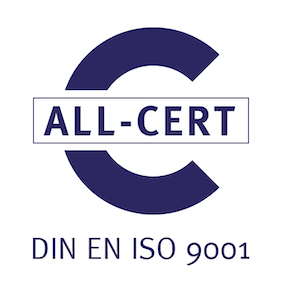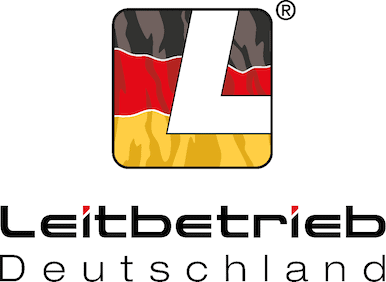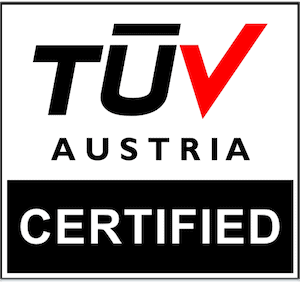THOUGHTS ON THE EC DIRECTIVE FOR BREATHING AIR FILLING SYSTEMS OR WHY "MADE IN GERMANY
The existing legal regulations are partially replaced or repealed by the European Pressure Equipment Directive, whose 5-year transition or implementation period began to run on 29.11.1999. This means that during these 5 years the national pressure vessel regulation and the new EC directive can be applied. If a manufacturer certifies a pressure vessel or assembly after 29.11.1999 according to the new EC Directive, this certification and the associated treatment according to the new EC Directive must be recognized by the authorities of the member countries.
Time and again, filling station operators are displeased and lack understanding because some authorities are still finding it difficult to implement the new directives and in some federal states these EC directives and even federal directives are steadfastly ignored.
In many conversations on this topic it quickly becomes clear that there is no arbitrariness or harassment on the part of the authorities, but it is often rather due to the uncertainty in the application of the new regulations and above all in the serious step backwards for us Germans (by the way, some of our neighbors think the same way here) from the safety standards achieved here, for which the approving authority must ultimately answer in the event of an accident.
The liberalization of regulations in the area of pressure vessels and equipment, which is intended to lead to the future adaptation of safety standards to a common level within the EC, means considerable, not entirely harmless safety-related losses for the operators of such equipment in some areas.
At this point, we would like to demonstrate to you by means of an example why here (in my opinion, rightly so) some authorities, and above all the experts of the TÜV, are working with great concern on a new adapted and up-to-date national regulation and are currently having such a hard time with approvals.
Example:
The final filter housing made of aluminum from a well-known compressor manufacturer in other European countries corresponded to a Class II pressure vessel in accordance with the German Pressure Vessel Ordinance.
(volume content x max. pressure = <200) in this case (0.749 L x 265 W = 198.49)
Class II pressure vessels did not require a type examination, but only a manufacturer's certificate and a corresponding marking.
According to the new EC directive, the same pressure vessel with a volume of 0.749 L may be pressurized to an unimaginable 1000 bar, without a type test or similar being required.
All that is required is a manufacturer's certificate stating that this pressure vessel and its manufacture are in accordance with "good engineering practice".
To this end, let us allow the question, which everyone can answer for themselves, "What is good engineering practice in Germany compared to Portugal or Greece?"
Without wishing to offend our neighbors, this may be a serious difference, but for us it represents a step backward in terms of safety technology by several decades. Just imagine that the Austrian counterpart to our Pressure Vessel Ordinance, the Steam Boiler Ordinance, which is almost identical in the most important points, dates back to the K+K monarchy.
Pressure vessels exceeding the value 200 require in any case a type examination of the BAM (Federal Office for Materials Testing). When the above-mentioned southern manufacturer produced 300 bar compressors and the corresponding filters, the filter tubes were shortened for the sake of simplicity in order to save expensive type tests and costs and thus remain in Class II of the pressure vessels. Of course, he did this only if German or Austrian customers demanded it (in other countries and especially in the country of this manufacturer, regulations are not that interesting, especially if they are from other countries - they are far away). A course of action that would be unthinkable for German manufacturers for liability reasons alone.
As a summary of this, you can assume that responsible manufacturers in Germany or Austria still build their plants according to the proven regulations such as "AD-Merkblätter" or "technische Regeln für Druckgase und Druckbehälter". This is one way of once again living up to the once rightly proverbial "Made in Germany" and thus demonstrating technological progress and quality.
For decades, Italian manufacturers preferred to buy German cars or German machines to manufacture their products. This was no accident, and German manufacturers would do well to remember the old traditions a little and to use this safety-technological step backwards imposed by Brussels as an opportunity to regain a piece of "Made in Germany".
There must be no compromises in the safety of plant and machinery, and certainly no backward steps. Instead, countries that are lagging behind in this respect must try to catch up with the help of high-tech members. Technological backward steps do not bring progress or innovations and thus also represent backward steps in the standard of training or cause an even more massive exodus of good skilled workers.
In no way is this article intended to make it appear that the author or the industry are anti-Europe or want to call for a boycott against some manufacturers from member countries.
The idea of Europe is certainly not that each member gives up its identity. With this policy, Europe is increasingly running the risk of losing more and more of its already tarnished image in technological terms, and is thus becoming an increasingly convenient "partner" for the Americans (or "takeover candidate" in the age of globalization and takeover of the markets).
However, there is one thing we can take from the Americans and make use of, a little more national pride.


